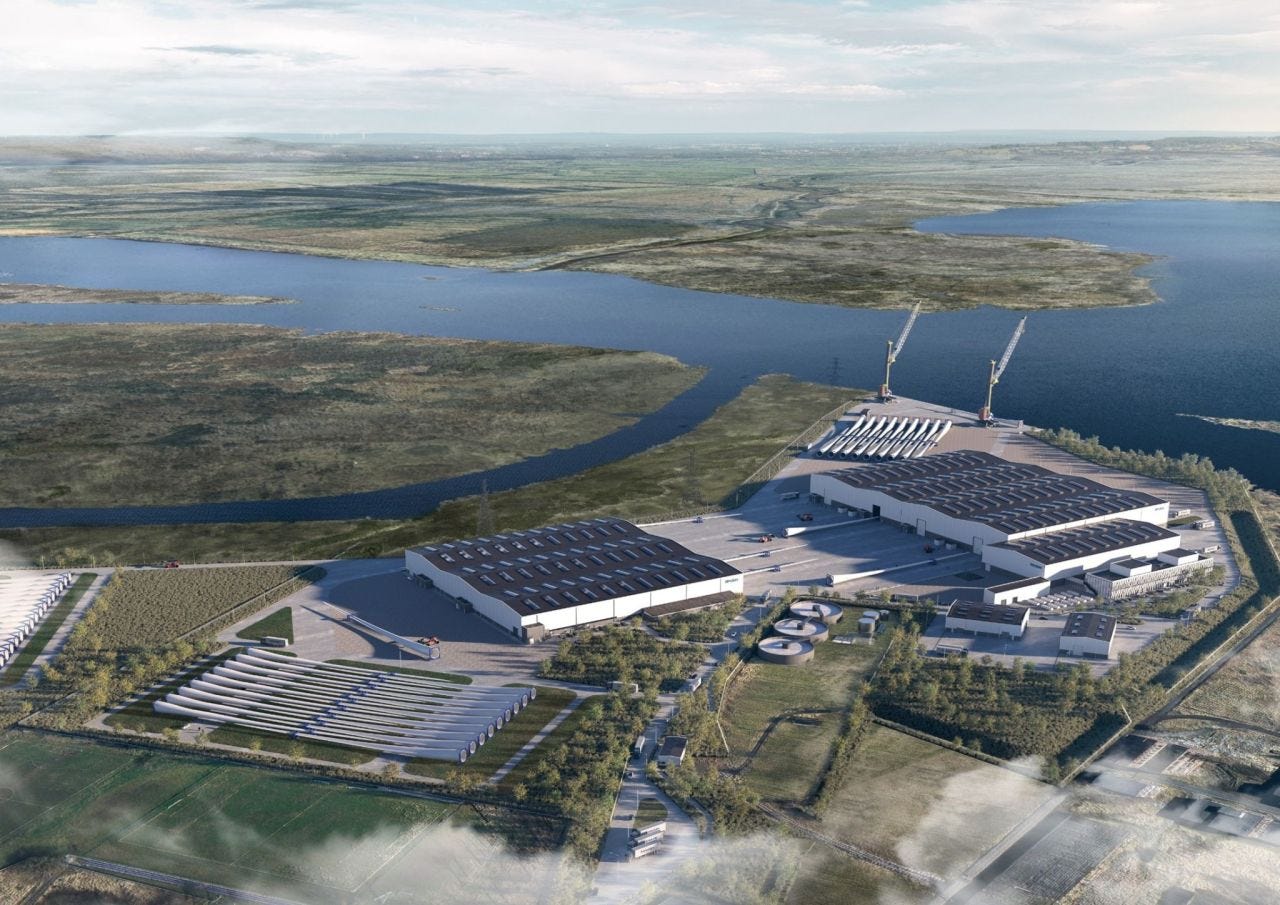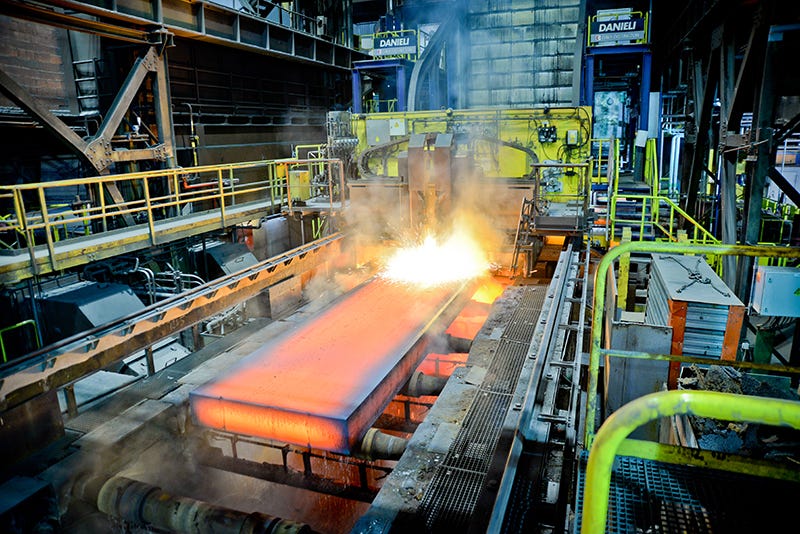Windletter #66 - Record of wind power installations in Europe, but not enough
Also: decommissioning of a wind farm in France, Poland as an offshore manufacturing hub in Europe, low-emission towers of Vestas and ArcelorMittal, and more.
Hello everyone and welcome to a new issue of Windletter. I'm Sergio Fernández Munguía (@Sergio_FerMun) and here we discuss the latest news in the wind power sector from a different perspective. If you enjoy the newsletter and are not subscribed, you can do so here.
The most read from the last edition has been: the challenges of wind energy in Spain in 2024, the video of slacklining between two wind turbines, and the video of the first kilowatt hours from Vineyard Wind.
Europe installs 17 GW of wind power in 2023: the good and the bad
Europe installed 17 new GW of wind power in 2023, setting a new historical record but far away from European Union's 2030 targets, which aim for around 30 GW annually.
According to Wind Europe data, 14 GW were onshore wind, while the remaining 3 GW were offshore. Currently, there are about 220 GW of installed wind power in Europe, generating 19% of the entire EU's electricity.
The countries with the highest number of installed GW were Germany, the Netherlands and Sweden. In the case of the Netherlands, this was mainly due to the 1.5 GW Hollandse Kust Zuid wind farm.
The International Energy Agency estimates that an average of 23 GW will be installed in the period 2024-2028. The Wind Power Action Plan should help meet and even exceed that figure.
👉 An interesting fact is that, according to Wind Europe, the capacity factor of new onshore wind farms ranges from 30% to 48%, while that of new offshore wind farms is above 50%.
For Spain, it has been a disappointing year, with the lowest installed MW number in recent years (pending official confirmation):
2023 ≈ 0.6 GW
2022 = 1.670 GW
2021 = 0.843 GW
2020 = 1.683 GW
2019 = 2.168 GW
Installations do not achieve "linearity"; the number of installations fluctuates throughout the years. This is not good for the supply chain and the workforce, which cannot be properly sized or make investments with foresight.
Moreover, the market is now driven by "permitting", meaning that if more installations are not happening, it is mainly because the administration and stakeholders do not have the capacity to do it faster.
Auctions are not expected in the short term, but the reality is that they are not needed because the sector has an appetite for building installations both with merchant exposure and through corporate PPAs.
👉 Most likely, Wind Europe will soon publish its annual report with the definitive statistics for 2023, and we will analyze it here in Windletter. So, if you don't want to miss it, subscribe.
_
Evolution of electricity generation in Spain by source
We have occasionally shared here the wonderful charts published by Víctor (@victorgcBCN) on Twitter/X.
Here is the evolution of energy generated by technology since 2016. The growth of solar power in recent years is particularly surprising, as is the absolute decline of coal as a form of electricity generation, along with the growth of combined cycles.
In his Twitter/X post, you can see other charts such as:
Evolution of generation with renewables, nuclear, and fossil fuels.
Evolution of pumped storage use (spoiler: increasing over time).
Percentage of hours where renewables exceed 50% of demand.
It's worth taking a look.
_
A court orders the dismantling of a wind farm in France
Last week, we discussed that Enel has been forced to dismantle a wind farm of 84 turbines in the United States by court order. This time, a similar case has occurred in France, although the problem is of a different nature.
A court in Nîmes, France, has ordered the dismantling of a wind farm due to the threat it poses to local wildlife, including golden eagles that nest in the area.
The judgment, published on December 7, demands the immediate dismantling of all wind turbines and the restoration of the site within 15 months.
The wind farm started operating in 2016 and is located near the southern town of Lunas in Languedoc, France. I believe I found it on Maps, but I'm not sure if it's the correct one.
It is a wind farm owned by the German company EnBW, which has stated that it will appeal the decision.
_
Poland, a new hub for offshore wind manufacturing in Europe
Poland is attracting significant investments in offshore wind manufacturing. Over a year ago, Vestas announced that it would establish an assembly plant for the nacelles of its V236-15.0 MW in the country. The factory, expected to be operational by 2025, will create around 700 direct jobs in the country.
Now, the Danish manufacturer has just made another announcement, this time for a blade factory located in the city of Szczecin, where it will manufacture blades for the same wind turbine model. The factory aims to be operational by 2026 and create around 1,000 direct jobs.
By that year, Vestas expects to have a total of 2,500 employees in Poland, making it a key hub for its offshore operations.
As if that weren't enough, almost in parallel, the Spanish company Windar Renovables has also announced the opening of a XXL tower factory in the Polish port of Szczecin, with which it already had a preliminary agreement. Windar mentions 450 direct jobs and the capacity to manufacture towers for wind turbines up to 20 MW.
This way, Poland, and specifically the port of Szczecin, is poised to become an industrial hub for offshore wind in Europe.
It is worth noting that Poland is a country where coal plays a central role in electricity generation, and it has made a strong commitment to offshore wind. The country's goals include having an installed capacity of 5.9 GW by 2030, leading many major players (both developers and supply chain companies) to enter the Polish market.
_
Vestas teams up with ArcelorMittal to offer low-emission steel towers
In collaboration with ArcelorMittal, Vestas has unveiled a new steel tower that significantly reduces CO2 emissions associated with manufacturing.
According to Vestas, this low-emission steel is produced using 100% steel scrap melted in an electric arc furnace powered entirely by wind energy at ArcelorMittal's Industeel Charleroi steel plant in Belgium. Subsequently, the steel slabs are transformed into heavy plates at ArcelorMittal's steel plant in Gijón, Spain.
This low-emission heavy steel plate, which is subsequently used to manufacture the towers, comes with an Environmental Product Declaration (EPD) certified by an independent body. The EPD provides a comprehensive environmental footprint of the product, allowing for easier product comparisons.
The first project to use this low-emission steel will be Baltic Power (1.2 GW) in Poland. The top section of 52 out of the 76 towers will be made with this steel.
This initiative is quite similar to the GreenerTower presented by Siemens Gamesa in April 2023, which will be utilized in the Thor project with RWE.
_
Montaña Mina, the abandoned wind farm causing issues in Lanzarote
Montaña Mina wind farm is a facility located on the island of Lanzarote in the municipality of San Bartolomé and has been causing problems for several years (Google Maps link).
The installation, consisting of 5 Vestas V27/225 wind turbines (225 kW power, 27 m diameter), commissioned in 1992, has been abandoned for some years, leading to safety issues such as a wind turbine spinning with the rotor out of control or the detachment of a blade.
These issues have now escalated, with one of the wind turbines collapsing, causing the tower to fall and also breaking a power distribution line, resulting in a five-minute power outage for approximately 2,000 people.
According to El Diario de Lanzarote, the Ministry of Ecological Transition and Energy of the Government of the Canary Islands has stated that it has ordered the owner of the wind farm (Energías Limpias Canarias SL) to dismantle it, and they have a one-month deadline to initiate the process. Otherwise, legal action will be taken.
👉 I am extremely surprised that a facility ends up in this state. Why would anyone abandon the wind farm in such an area? Why not keep the wind turbines in operation? Had it become economically unviable? Many questions, but in any case, leaving the wind farm to its fate is a complete negligence.
Regarding the possibility of repowering, it seems that installing larger wind turbines is not possible due to the proximity to the airport.
Thank you very much for reading Windletter. If you enjoyed it, I invite you to subscribe, leave a ❤️, forward it by email, share it on social media, or recommend it to others.
You can follow Windletter's profiles on Twitter and LinkedIn. Also, if you enjoy reading about energy, check out Windletter's Library.
You can also contact me through my Twitter or LinkedIn profiles.
See you in the next one!
Disclaimer: The opinions presented in Windletter are mine and do not necessarily reflect the views of my employer.








